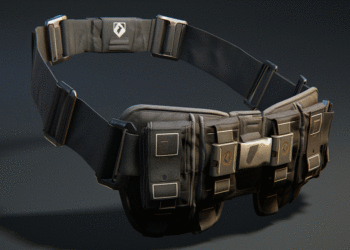Wristwatches, though primarily tools to tell time, have grown to be symbols of taste, elegance, and class. Luxury watches, in particular, are seen as investments – sometimes as liquid as gold or stocks. However, evaluating their worth can be more intricate than one might think. Enter the algorithmic approach.
The Traditional World of Luxury Watches
Historically, the valuation of watches was based on several subjective parameters: brand heritage, craftsmanship, design, rarity, and demand. Professionals and enthusiasts would often spend years understanding the nuanced intricacies of these luxurious timepieces, often relying on years of experience and gut instincts.
The Watch Exchange London, for instance, thrived on such traditional methods, offering a platform for enthusiasts and investors to trade these luxury items based on subjective evaluations.
The Need for an Algorithmic Approach
However, as the market grew and diversified, so did the complexities associated with pricing and valuation. The increasing demand for luxury watches, coupled with the influx of new models and limited editions, made it challenging to keep track of their real-time value. With financial markets benefiting from algorithmic models, why shouldn’t the watch market do the same?
- Data-Driven Decisions: Algorithms can process vast amounts of data quickly, making it easier to analyse market trends, brand value fluctuations, and historical prices.
- Predictive Analysis: Algorithms can make forward-looking evaluations based on patterns, aiding investors in making informed decisions about future market directions.
- Consistency: Human evaluations, though insightful, can vary and are influenced by biases. An algorithmic model offers a consistent, unbiased valuation.
Building the Algorithm
Creating an effective algorithm for the luxury watch market requires a multi-faceted approach:
- Data Collection: Data sources such as auction results, sales records, and online marketplaces are crucial. Gaining access to comprehensive databases will ensure the algorithm has a broad perspective.
- Brand Analysis: Brands like Rolex, Patek Philippe, and Audemars Piguet have distinct market behaviours. The algorithm should be brand-aware, adjusting its valuation based on specific brand parameters and histories.
- Model and Rarity Recognition: Special editions, limited releases, or iconic models tend to have higher value. These must be distinguished from regular models for accurate evaluation.
- External Factors: Economic trends, global events, or even popular culture (such as a watch being featured in a film) can influence a watch’s value. The algorithm must be dynamic, factoring in these external cues.
Case Study: Rolex Daytona
Take, for instance, the Rolex Daytona. Historically, its value has been influenced by its association with Paul Newman, its rarity, and its demand among collectors. An algorithm, in this case, would consider its auction prices, the general sentiment around vintage Rolexes, the specific history associated with certain Daytona models, and even the macroeconomic climate, providing a holistic valuation.
Challenges and Limitations
While algorithms offer great promise, they aren’t without their challenges:
- Data Authenticity: Not all sales records, especially from private sales, are readily available or genuine. The efficacy of the algorithm hinges on the authenticity of its data sources.
- Subjective Appeal: The aesthetic appeal or the emotional value attached to a watch cannot be quantified easily. An algorithm might give you the numbers, but the heart wants what it wants.
- Rapid Market Changes: While algorithms can predict based on past patterns, unprecedented market shifts can always occur.
Conclusion
The luxury watch market is undoubtedly experiencing a transformation with the integration of algorithmic evaluations. While traditional methods based on expertise and experience will always have their place, there’s no denying the edge that a data-driven approach provides to investors. As with all investments, diversifying your strategies – blending the old with the new – might just be the best approach.
David Prior
David Prior is the editor of Today News, responsible for the overall editorial strategy. He is an NCTJ-qualified journalist with over 20 years’ experience, and is also editor of the award-winning hyperlocal news title Altrincham Today. His LinkedIn profile is here.













































































